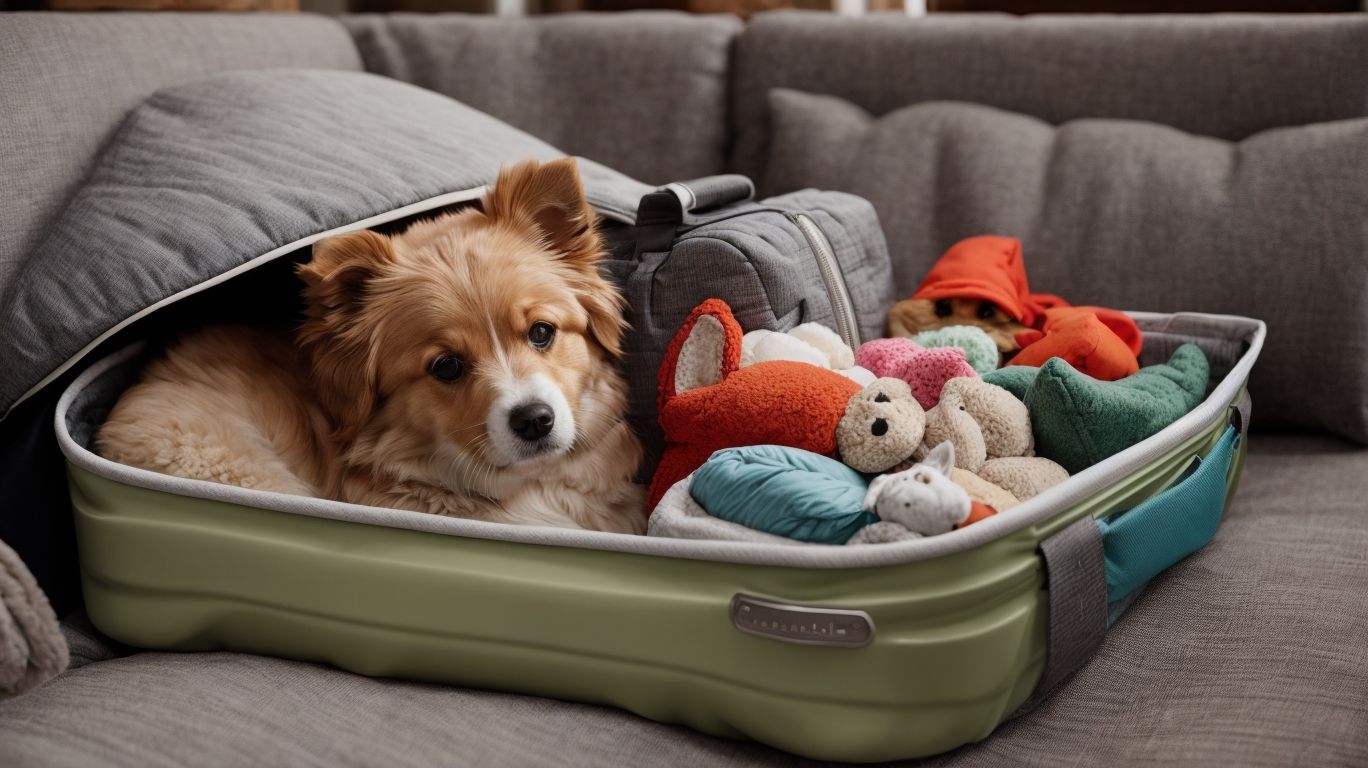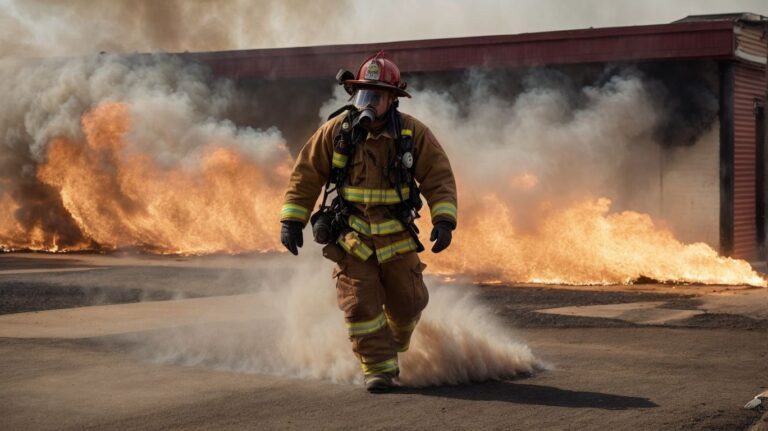Evacuation Tips for Household Pets – Are you worried about how to safely evacuate your furry family members during an emergency? As pet owners, it is our responsibility to ensure our pets’ safety in any situation.
This article will provide valuable tips and advice on how to effectively and efficiently evacuate your household pets in times of crisis, giving you peace of mind and better preparedness.
DOWNLOAD YOUR FREE COPY – SAFELY EVACUATING YOUR PETS!
Why Is It Important to Evacuate with Pets?
When faced with an evacuation, it is crucial to evacuate with pets for several reasons. Firstly, pets are considered part of the family and deserve to be kept safe during emergencies. Leaving them behind can potentially expose them to danger or abandonment. Secondly, pets can provide valuable emotional support to their owners during stressful times, helping to reduce anxiety and provide comfort. Lastly, evacuating with pets ensures their well-being and prevents them from being left behind in hazardous conditions.
Remember, it is essential to plan and prepare for pet evacuation to ensure their safety and your peace of mind.
How to Prepare for Evacuation with Pets?
Evacuating your home with pets can be a challenging and stressful experience. However, with proper preparation and planning, you can ensure the safety and well-being of your furry companions. In this section, we will discuss the steps you can take to prepare for evacuation with pets. From creating a plan to packing an emergency kit for your pet, we will cover all the essential aspects to consider. Finally, we will also explore the importance of having a safe place to stay during an evacuation with your pets.
Make a Plan
When it comes to evacuating with pets during an emergency, having a plan in place is crucial for their safety and well-being.
- Make a plan: Gather important documents, prepare a pet emergency kit, identify a safe place to stay, arrange transportation, and make a communication plan.
- Gather important documents: Make sure to have your pet’s identification, vaccination records, and any necessary medications or medical information.
- Prepare a pet emergency kit: Include food, water, bowls, a leash, a carrier, blankets, and any other necessary supplies.
- Identify a safe place to stay: Research pet-friendly hotels or shelters in advance and have a backup plan in case your first choice is unavailable.
- Arrange transportation: Determine how you will transport your pet during the evacuation and ensure that your vehicle is pet-friendly.
- Make a communication plan: Share your evacuation plans with family members or friends and keep important contact information readily available.
Prepare an Emergency Kit for Your Pet
Having an emergency kit ready for your pet is crucial to ensuring their safety and well-being in the event of an evacuation.
- Gather essential supplies: This includes food, water, medications, a leash, collar, ID tags, and a sturdy carrier.
- Pack comfort items: Don’t forget to bring familiar bedding, toys, and treats to help reduce stress for your pet.
- Include medical records: Keep copies of your pet’s vaccinations, medical history, and your veterinarian’s contact information.
- Prepare identification: Make sure to have an updated photo of your pet and ensure they have a microchip or ID tag with your current contact information.
- Keep it easily accessible: Store the emergency kit in a designated location that is easily accessible in case of an evacuation.
Remember, being prepared is crucial to keeping your pet safe during emergencies. Stay alert, follow evacuation instructions, and prioritize the well-being of your furry companion.
Have a Safe Place to Stay
Having a safe place to stay is crucial when evacuating with pets. Here are some steps to ensure their safety:
- Research pet-friendly accommodations in advance.
- Keep a list of hotels, motels, or boarding facilities that accept pets.
- Make arrangements with friends or family members who can provide a temporary shelter.
- If staying at a shelter, check if they allow pets or have designated pet-friendly areas.
- Pack necessary supplies such as food, water, medication, and bedding for your pets.
Remember, during emergencies, it’s essential to act quickly and have a plan in place. Make sure your pets have a safe place to stay to minimize stress and ensure their well-being.
What to Do During an Evacuation with Pets?
In the event of an evacuation, it is important to have a plan in place for your beloved pets. This section will cover the necessary steps to take when evacuating with your pets. From keeping them secured on a leash or in a carrier, to bringing essential supplies, to staying alert and following instructions, we will discuss everything you need to know to ensure the safety of your furry family members during an evacuation.
Keep Pets on a Leash or in a Carrier
When evacuating with pets, it is crucial to secure them on a leash or in a carrier to ensure their safety. Here are the steps to follow during an evacuation:
- Keep your pet on a leash or place them in a carrier for their own protection.
- Gather necessary supplies such as food, water, medications, and comfort items.
- Stay alert and follow instructions from emergency personnel to ensure a smooth evacuation process.
By keeping your pets on a leash or in a carrier, you can prevent them from getting lost or injured during the chaos of an evacuation.
Bring Necessary Supplies
When evacuating with pets, it is crucial to pack necessary supplies to ensure their well-being during the evacuation process. Here is a list of essential items to include:
- Food and water: Make sure to bring enough food and water to last for several days.
- Medication: Don’t forget to bring any necessary medications your pet may need.
- Leash and collar/harness: Keep your pet secure and under control during the evacuation.
- Identification tags: It is important to have updated identification tags with your contact information for your pet.
- Blankets and bedding: Provide comfort and warmth for your pet during the evacuation.
- Toys and treats: Keeping your pet entertained and providing a sense of familiarity can help reduce stress during the evacuation.
- Litter and litter box (for cats): Make sure to bring a litter box and litter for your cat to use during the evacuation.
- First aid kit: Be prepared with a basic first aid kit that includes bandages, antiseptic, and tweezers.
By packing these necessary supplies, you can ensure the safety and well-being of your pets during the evacuation process.
Stay Alert and Follow Instructions
During an evacuation with pets, it is crucial to remain vigilant and adhere to instructions from authorities to ensure the safety of both you and your furry companions. Here are some steps to help you navigate this challenging situation:
- Pay attention to official announcements and instructions from authorities.
- Stay informed about evacuation routes and any changes in the situation.
- Keep your pets on a leash or in a carrier to prevent them from getting lost or causing chaos.
- Bring necessary supplies, such as food, water, medications, and comfort items, to keep your pets comfortable.
- Follow designated evacuation procedures and protocols to ensure a smooth and orderly process.
True story: During a wildfire evacuation, a family followed instructions, staying alert and bringing their cat in a carrier. They safely reached the evacuation center and were reunited with their pet after the ordeal.
What to Do After Evacuation with Pets?
After successfully evacuating your household pets, there are still important steps to take to ensure their safety and well-being. In this section, we will discuss what to do immediately after evacuation with your pets. We’ll cover important tasks such as checking for injuries, keeping your pets calm and comfortable, and updating contact information. These steps will help you and your pets navigate the aftermath of an evacuation with minimal stress and maximum preparedness.
Check for Injuries
After evacuating with your pets, it’s important to check for injuries to ensure their well-being. Here are some steps to follow:
- Assess the situation: Look for any visible injuries such as cuts, bruises, or limping.
- Examine your pet carefully: Check for signs of pain, swelling, or difficulty breathing.
- Contact a veterinarian: If you notice any injuries or suspect internal damage, seek immediate veterinary care.
- Provide comfort: Keep your pet calm and comfortable by providing a quiet and secure space.
- Monitor their behavior: Watch for any changes in behavior or appetite, as these can indicate underlying injuries.
Remember, pets may hide signs of injury, so it’s important to be vigilant and seek professional help if needed.
After a recent hurricane, a family evacuated with their dog. When they arrived at a shelter, they noticed their dog was limping. They immediately took him to a veterinarian who discovered a minor injury. With proper care, the dog made a full recovery.
Keep Pets Calm and Comfortable
Keeping pets calm and comfortable during an evacuation is crucial for their well-being. To achieve this, here are some steps to follow:
- Provide a familiar environment: Bring their favorite bedding or toys to help create a sense of comfort.
- Maintain a calm demeanor: Pets can sense our anxiety, so it is important to remain calm and reassuring to help them feel more at ease.
- Stick to their routine: Try to maintain their regular feeding schedule and exercise routine as much as possible.
- Use calming techniques: Utilize calming aids such as pheromone sprays, calming music, or thunder jackets to help reduce anxiety.
- Keep them occupied: Provide distractions like interactive toys or treats to keep their minds occupied during stressful situations.
- Ensure their safety: Keep them in a secure carrier or on a leash to prevent them from getting lost or injured during the evacuation.
Update Contact Information
Updating contact information is crucial when evacuating pets to ensure their safety and reunification if separated. Follow these steps to update your contact information:
- Inform Microchip Registry: Make sure to update your contact details with the microchip registry your pet is registered with.
- Update ID Tags: Check that your pet’s ID tags have your current phone number and address.
- Contact Local Shelters: Notify local animal shelters or rescue organizations about your evacuation plans and provide them with your updated contact information.
- Notify Friends and Family: Share your updated contact information with trusted friends or family members who can be contacted in case of an emergency.
- Register with Pet-Friendly Evacuation Centers: If you plan to stay at a pet-friendly evacuation center, register your pets and provide updated contact information.
Additional Tips for Evacuating with Pets
When it comes to evacuating during a disaster, it’s important to have a plan in place for your furry family members as well. In addition to packing necessary supplies and having a designated meeting place, there are some additional tips that can ensure a smooth evacuation with your pets. These include microchipping your pet, keeping their vaccination records up to date, and practicing evacuation drills with them. By implementing these measures, you can be better prepared for any emergency situation with your beloved pets by your side.
Microchip Your Pet
Microchipping your pet is a crucial step in guaranteeing their safety and increasing the likelihood of a reunion if they become lost. Here are the necessary steps to microchip your pet:
- Research: Find a reputable veterinarian or animal clinic that provides microchipping services.
- Schedule an appointment: Contact the veterinarian or clinic to schedule a convenient time for the procedure.
- The procedure: During the procedure, a small microchip is inserted under your pet’s skin, typically between the shoulder blades.
- Registration: Ensure that your contact information is registered with the microchip company so that you can be easily contacted if your pet is found.
- Update: Keep your contact information up to date with the microchip company in case of any changes in your address or phone number.
True story: A family who had their dog microchipped was able to be reunited after the dog went missing during a storm. Thanks to the microchip, the dog was scanned, and the family was contacted promptly.
Keep Current Vaccination Records
Keeping current vaccination records for your pet is crucial for their well-being and safety. To ensure you maintain up-to-date records, follow these steps:
- Schedule regular veterinary visits to ensure your pet’s vaccinations are current.
- Keep a copy of your pet’s vaccination records in a safe and easily accessible place.
- Make sure to update your pet’s vaccination records with any new vaccinations or boosters.
- Inform your veterinarian of any changes in your contact information to ensure they can reach you if needed.
It is also recommended to have digital copies of your pet’s vaccination records saved on your phone or email. This way, you can easily access them during emergencies or travels. Be sure to regularly check with your veterinarian for any updates or changes in vaccination guidelines to keep your pet protected.
Practice Evacuation Drills with Your Pet
In order to ensure the safety of your pet and minimize stress during emergencies, it is essential to practice evacuation drills with them.
- Prepare a designated safe area: Identify a secure space where your pet can stay during the drill.
- Introduce the carrier: Familiarize your pet with their carrier by leaving it open, placing treats or toys inside, and gradually increasing their comfort level.
- Practice leashing or crating: Train your pet to willingly enter their crate or allow you to secure their leash.
- Simulate evacuation: Conduct mock evacuations by following your emergency plan, including gathering essential supplies and evacuating to a safe location.
- Reinforce positive behavior: Praise and reward your pet for their cooperation during the drill to encourage future compliance.
In a true story, a family regularly practiced evacuation drills with their dog. When a wildfire struck their area, they were able to quickly and calmly evacuate with their pet, ensuring their safety and peace of mind.
Frequently Asked Questions
What should I do with my pets during an evacuation?
It is important to have a plan in place for your pets in case of an evacuation. If possible, take them with you when you evacuate. If you are unable to do so, have a designated caregiver or boarding facility lined up to care for them.
What supplies should I have on hand for my pets during an evacuation?
It is important to have a disaster preparedness kit for your pets that includes food, water, medication, and any necessary supplies. Also, have a carrier or crate and a leash or harness ready to transport your pets safely.
How do I prepare my pets for an evacuation?
Make sure your pets are microchipped and have updated identification tags with your contact information. Practice evacuation drills with your pets and have a familiar escape route that they are comfortable with.
What should I do if my pet gets lost during an evacuation?
Contact local animal shelters and veterinarians to report your lost pet. Also, post flyers and use social media to spread the word. Make sure your pet’s microchip information is up to date in case they are found.
What should I do if my pet is injured during an evacuation?
If your pet is injured, seek immediate veterinary care if possible. If not, administer first aid as best as you can and keep them calm until you can reach a veterinarian. Make sure to include a first aid kit in your disaster preparedness kit for your pets.
How can I help my pet adjust after an evacuation?
Your pet may experience stress and anxiety after an evacuation. Provide them with a comfortable and familiar environment and spend extra time with them to help them adjust. If necessary, consult with a veterinarian for additional support.







